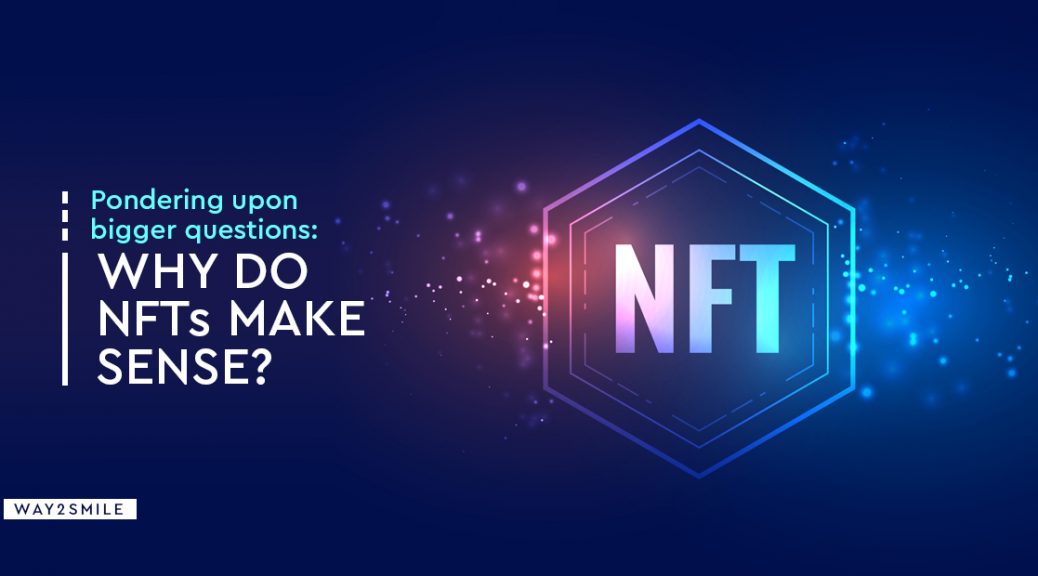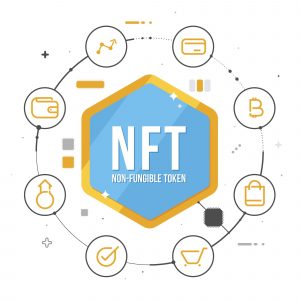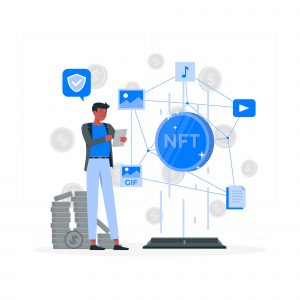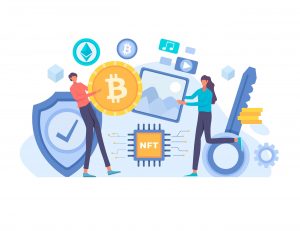
Pondering Upon Bigger Questions: Why do NFTs make sense?
There’s nothing like a flurry of blockchain news to get people’s attention and make them wonder what’s going on. This year, non-fungible tokens (NFTs) seem to have burst from the ether. These digital assets are selling like rare Dutch tulips from the 17th century, with some fetching millions of dollars. Art and music are among the NFTs, as are tacos and toilet paper.
According to market data tracker, DappRadar data analytics, NFT sales grew by $25 billion in 2021, as the crypto asset soared in prominence, fuelled by the growing attention of celebrities and tech enthusiasts.
The non-fungible-token (NFT) market rose dramatically in the first quarter of 2022, according to a new study by blockchain analytics firm Nansen. The blockchain industry is surpassing the cryptocurrency industry. The study emphasized the NFT company’s rapid growth, forecasting a market value of $80 million by 2025.
Is investing in NFTs, on the other hand, worth the money or the hype? Some observers believe they will go the way of the dot-com frenzy and Beanie Babies. Others feel that NFTs will permanently reshape the investing environment and are here to stay.

What are NFTs?
Anything that can be converted into a digital format qualifies as an NFT. Drawings, images, videos, GIFs, music, in-game objects, selfies, and even tweets may all be transformed into NFTs, which can then be traded for bitcoin online. NFT future applications, on the other hand, are distinguished from other digital forms by the use of Blockchain technology to sustain them.
Blockchain technology, for the uninitiated, is a decentralized ledger that keeps track of all transactions. It works similarly to a bank account, except that all of the user’s transactions are public and available to anybody, and they can’t be altered or modified after they’ve been recorded.
How did NFTs become popular?
NFTs are becoming more popular as a platform for artists to display and market their digital art. Since its inception in 2015, millions of dollars have been spent on NFTs, including Terra Nulius, the Ethereum Blockchain’s first NFT.
Even though this project was just a concept that enabled people to customize a short remark that was subsequently recorded on the blockchain, it was a success. Following that, in 2017, Curio Cards, CryptoPunks, and CryptoCats appeared, before NFTs progressively achieved public attention and broad use in early 2021.
NFTs in Metaverse
Metaverse is a virtual reality where users share experiences and converse in real-time within simulated scenarios. NFTs will play a paramount role in originating an ideal metaverse. More importantly, NFTs unlock the wide-new opportunities for enterprises, investors, and users in the fulness of time. Another method of fetching more real-world assets to the metaverse can be accomplished with the support of gaming models and interoperable blockchain games. Hence, it is obvious that NFTs are a gateway for enterprises to enter the metaverse world!
Hand-Picked Related Content ☛ Metaverse The Future Of The Internet – Explore The Evolution!
How does an NFT work?
NFTs are kept on a blockchain, which is a distributed public ledger that records transactions. The majority of users are familiar with blockchain as the underlying technology that enables the existence of cryptocurrencies. NFT applications in business are most often run on the Ethereum blockchain, but they can also be stored on other blockchains.
Art, GIFs, films, sports highlights, video game skins, and music are all examples of digital treasures that hold both tangible and intangible values. Even tweets are taken into consideration. Jack Dorsey, one of Twitter’s co-founders, sold his first tweet as an NFT for $2.9 million.

NFTs are essentially digital replicas of real-world collectibles. As a result, the purchaser receives a digital file rather than a genuine oil painting to hang on the wall. People who purchase NFTs will get exclusive ownership rights. It’s true that NFTs may only be owned by one person at a time.
It’s straightforward to verify ownership and transfer tokens between owners since NFTs provide unique data. The owner can also store specific data inside the NFT. For example, artists can sign their artwork by including their signature in the NFTs metadata.
What is the need for NFTs?
Artists and content creators have a once-in-a-lifetime chance to monetise their work thanks to blockchain technology and NFTs. For example, artists are no longer reliant on galleries or auction houses to sell their art. Instead, the artist may sell it directly to the buyer as a non-traditional toy, allowing them to keep a larger percentage of the earnings.
When a piece of art is sold, royalties can be programmed into the system so that the artist receives a percentage of the sale. Not just artists, but also many celebrities have been involved in the NFT trade, publishing NFTs of personal memories, artwork, and experiences.
Hand-Picked Related Content ☛ Blockchain in Digital Transformation
How to buy NFTs?
The following elements are required for anyone who wants to start their own NFT collection:
They must first get a digital wallet in which to store NFTs and cryptocurrencies. Depending on the currencies accepted by their NFT provider, users may need to purchase cryptocurrencies such as Ether. Anyone with a credit card can now purchase cryptocurrency on platforms such as Coinbase, Kraken, eToro, and even PayPal and Robinhood. They have the option to send it from the exchange to their chosen wallet. Keep in mind that most exchanges charge at least a part of a user’s transaction when they purchase crypto.

What are the most popular NFT marketplaces?
After users have their wallets set up and funded, they can shop at a variety of NFT sites. The following are the current major crypto NFT marketplaces:
-
OpenSea.io
“Rare digital items and collectibles” are advertised on this peer-to-peer marketplace. Users must first create an account in order to view the NFT collections. To locate new artists, they may also categorize products depending on their sales volume.
-
Rarible
Rarible, like OpenSea, is a democratic, open marketplace that allows artists and producers to issue and sell NFTs. Users may vote on items like fees and community regulations using RARI tokens on the network.
Wrapping Up
Many fascinating and creative projects are expected to drop in 2022 as NFTs become more mainstream. NFTs have come a long way, entwining themselves with some of the digital world’s biggest and fastest-growing industries, including gaming, metaverse, and Web3.
Investing in NFTs is ultimately a personal decision. If customers have extra money, it’s worth thinking about, especially if the digital asset is important to them. The market for NFT is growing, and now is the time for enterprises to take action and get in touch with reputable digital transformation service providers in order to obtain a cost-effective NFT business model.
